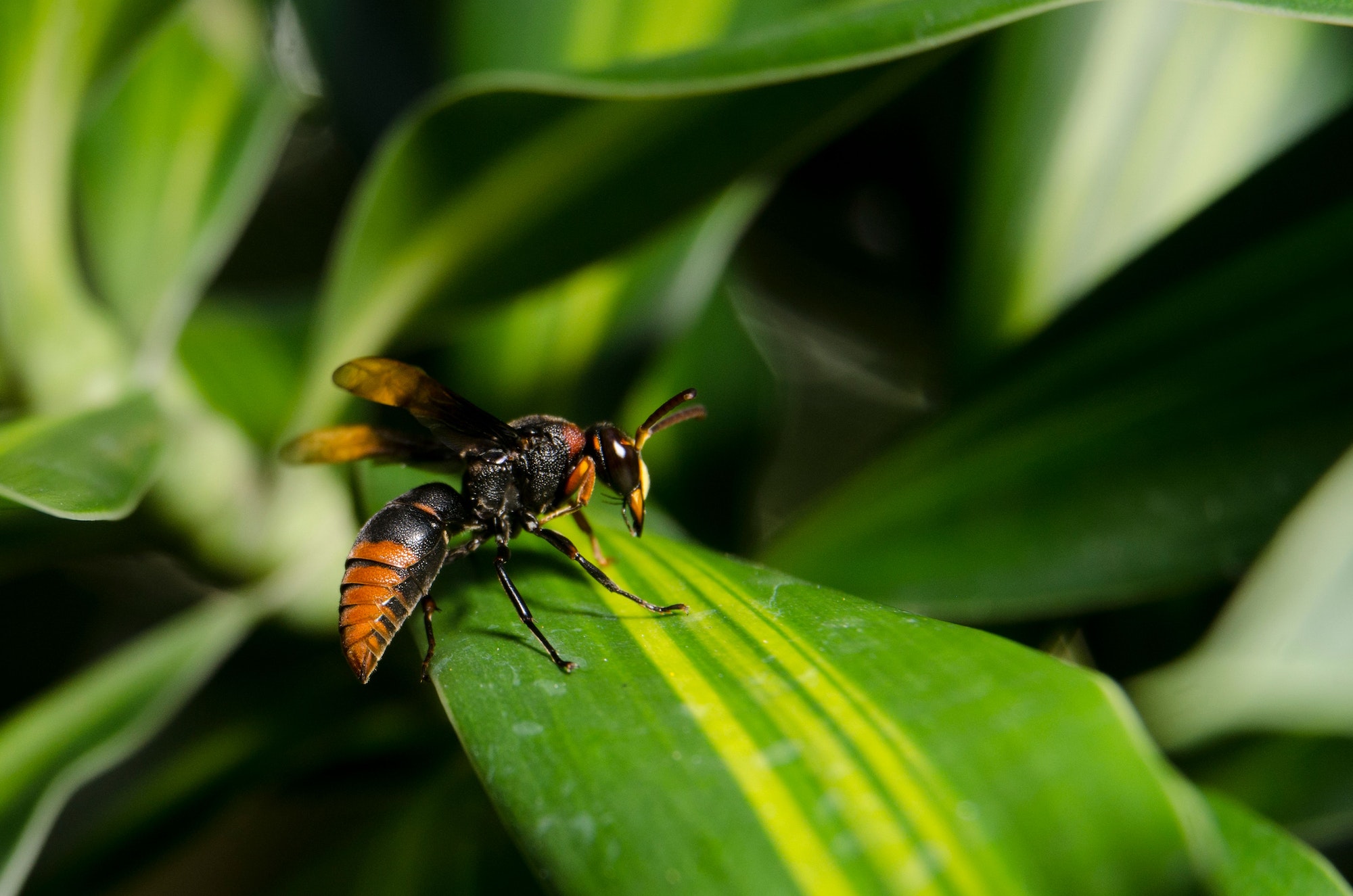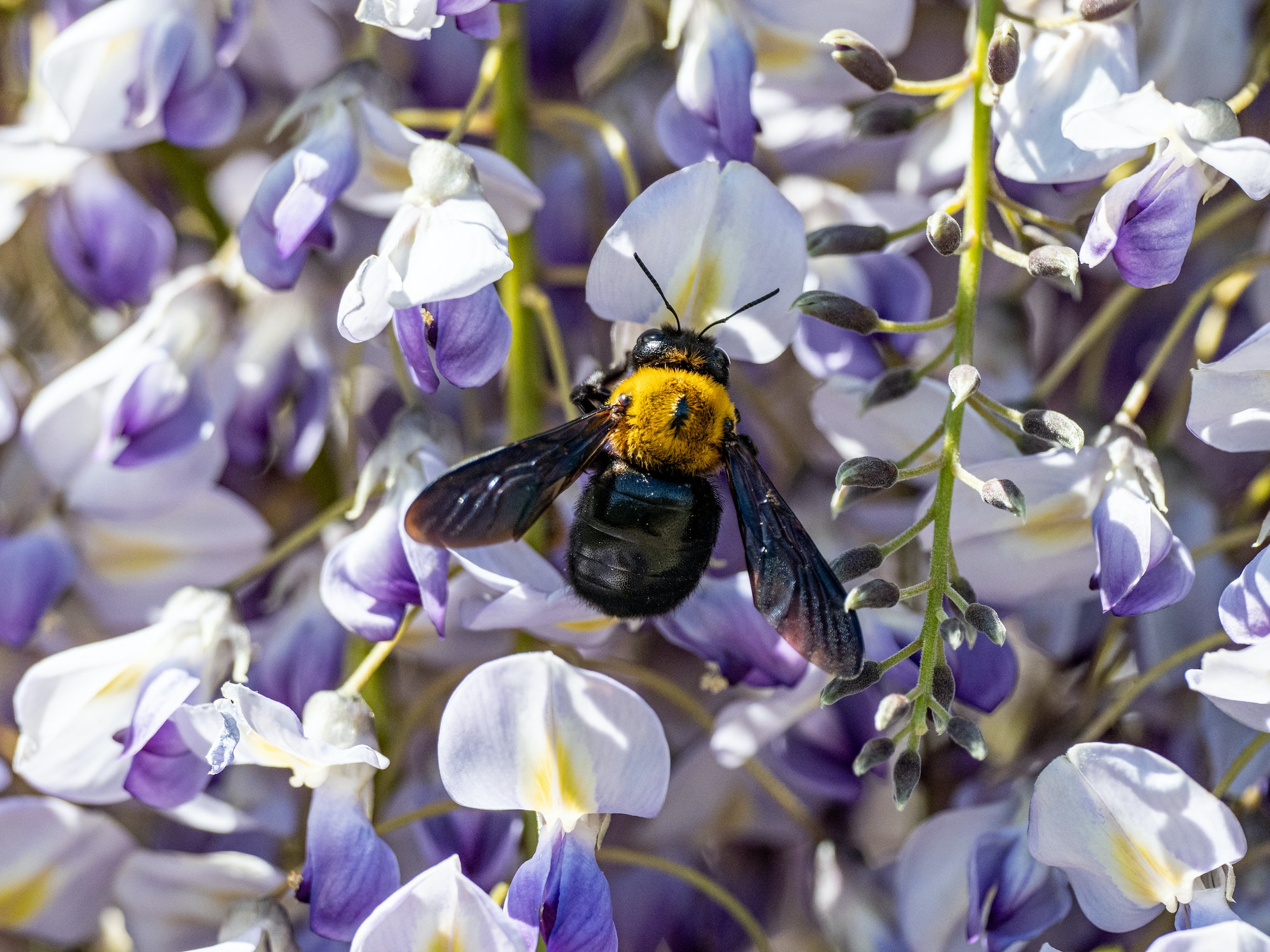Menu
Bees and wasps are a group of social stinging insects that make up part of the insect class hymenoptera. There are several common types of wasps in our area, mainly yellow jackets, paper wasps and hornets. Common bees in our area are honey bees, bumblebees and carpenter bees.
Some types of bees and wasps can be confused due to some similarities in size and colour. The main differences are that wasps have smooth, hairless bodies and are able to fold their wings at rest, while bees have hair covered bodies and cannot fold their wings. This is important as wasps can sting multiple times while bees lose their stinger and die after one sting.
Bees such as honey bees, bumble bees and other types of wasps such as mud daubers are also found in Ontario, and can build nests around homes, but are generally more beneficial than a nuisance.
Although wasps are considered beneficial because they feed on insects, about a quarter of our population are highly allergic to their venom. Chances are you know someone that will suffer a severe allergic reaction to being stung.
They are extremely protective of their nests and can be aggressive when disturbed. This happens frequently when they build their nests around dwellings and outdoor structures. Typical nesting sites include on limbs of trees, under rooflines, under decks, on and around play structures, sheds and fences as well as cracks and crevices in homes and sheds.
A colony consists of fertile queens, female workers and male drones. A large colony contains from 10,000 to 30,000 individuals. In the fall, queens and males mate, the workers and males die and the queens find a place to overwinter. In the spring, queens find a new nesting site, build a small nest and the circle of life continues. Old nests rarely get reused.

Yellow jackets are the most common type of wasps in Ontario. There are multiple species of yellow jackets making up this family. They are commonly seen hovering around waste and recycle disposal bins. They are small wasps, 2″ to ¾” long with the classic black and yellow striping. These wasps are also known as paper or umbrella wasps because of the umbrella shaped nests they build.

Hornets are generally larger than yellow jackets at 5.5 cm and with their size they generally pack a larger more painful punch. They are known for their large football shaped nest which unchecked, can reach up to 3 feet high. The most notorious hornet is the bald faced hornet. They are the most aggressive of the stinging insects we have in Ontario, and are sometimes known to attack in waves. These type of nests should never be handled by the home or business owner. Bald faced hornets are mainly black with a distinctive white face.

Carpenter bees are a larger sized bee, distinguished from its cousins by its large eyes and shiny hairless abdomen. They are traditionally considered solitary, but in some species will build nests in clusters. They get their name from their nest building behavior of chewing tunnels in wood to make their nests, causing minor structural damage to buildings. They could be considered master carpenters as the circle entrance hole to their nests look like it was made with a drill. They are also considered beneficial as like other bees they contribute to pollination of plants.